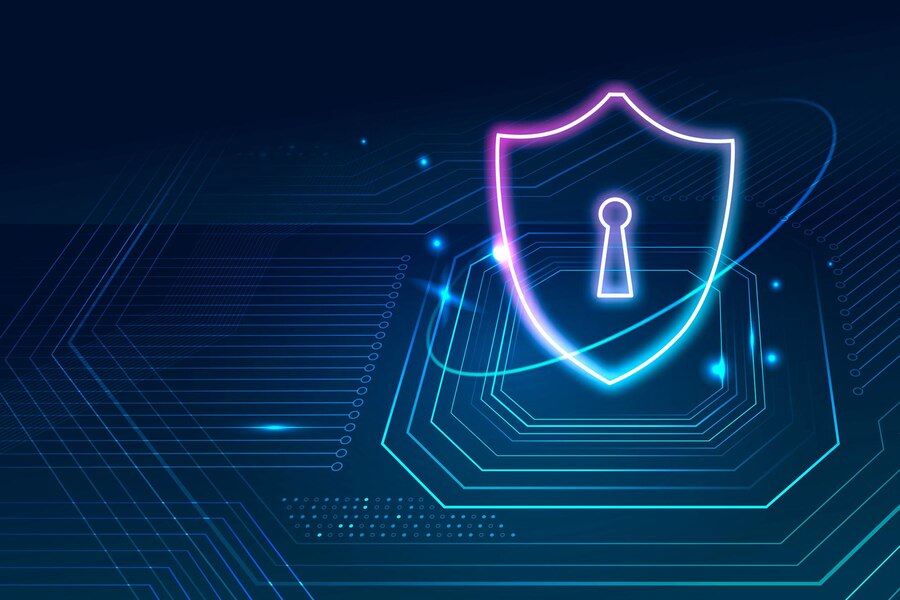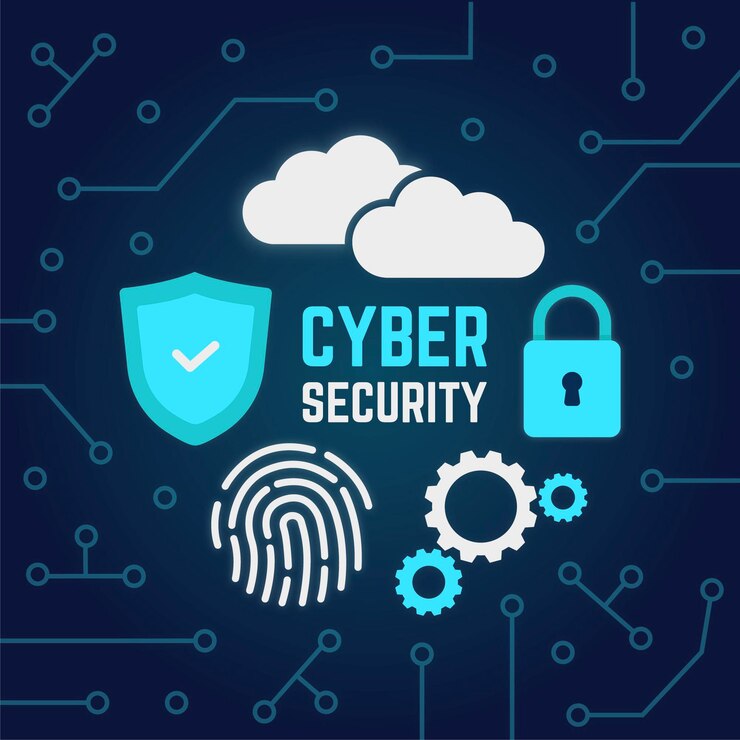The Importance of Cybersecurity Awareness
In today’s digital age, where technology has become an integral part of our personal and professional lives, the need for cybersecurity awareness has never been more critical. Cyber threats are constantly evolving, becoming more sophisticated and widespread, and posing significant risks to individuals, businesses, and even nations. Without proper awareness and understanding of these threats, we are all vulnerable to cyber attacks that can result in data breaches, financial loss, reputational damage, and even identity theft.

Cybersecurity awareness is not just the responsibility of IT professionals; it is a collective effort that requires the participation and cooperation of every individual. By staying informed and educated about the latest cybersecurity threats and best practices, we can minimize the risks and protect ourselves and our organizations from potential harm.
Common Cybersecurity Threats in the Digital Age

In the digital age, cyber threats come in various forms and can target anyone, regardless of their level of technical expertise. Among the most common cybersecurity threats are:
- Phishing: Phishing attacks involve cybercriminals masquerading as legitimate entities, such as banks or government agencies, in an attempt to trick individuals into revealing sensitive information like passwords or credit card details.
- Malware: Malware refers to malicious software that is designed to gain unauthorized access to a computer system, steal information, or cause damage. Examples include viruses, worms, and ransomware.
- Social Engineering: Social engineering attacks exploit human psychology to manipulate individuals into divulging confidential information or performing actions that compromise security. This can be done through techniques like impersonation, pretexting, or baiting.
- Weak Passwords: Weak passwords make it easier for cybercriminals to gain unauthorized access to accounts or systems. Commonly used passwords, such as “123456” or “password,” are easily cracked, putting sensitive data at risk.
- Unsecured Wi-Fi Networks: Connecting to unsecured Wi-Fi networks, especially in public places, can expose your device to potential attacks. Hackers can intercept data transmitted over these networks, compromising your privacy and security.
By understanding these common threats, individuals can be more vigilant and take proactive measures to protect themselves and their information.
Cybersecurity Statistics and Trends
The need for cybersecurity awareness is underscored by alarming statistics and trends that highlight the growing prevalence and impact of cyber attacks. According to a recent report by Cybersecurity Ventures, cybercrime is expected to cost the world $10.5 trillion annually by 2025, up from $3 trillion in 2015. This staggering increase is a stark reminder of the urgency to enhance cybersecurity practices.
Furthermore, the COVID-19 pandemic has exacerbated cyber threats, with remote work and increased online activities creating new vulnerabilities. The FBI reported a 400% increase in cybercrime incidents in 2020 compared to the previous year, as cybercriminals exploited the global crisis for their nefarious activities.
These statistics emphasize the need for individuals and organizations to prioritize cybersecurity awareness and take proactive steps to protect themselves against evolving threats.
Enhancing Cybersecurity Awareness in the Workplace
In the workplace, fostering a culture of cybersecurity awareness is essential for safeguarding sensitive data and maintaining the trust of customers and stakeholders. Here are some best practices for enhancing cybersecurity awareness in the workplace:
- Employee Training: Provide comprehensive cybersecurity training to all employees, educating them about common threats, safe browsing practices, and how to identify and report suspicious activities.
- Strong Password Policies: Enforce strong password policies that require employees to use complex passwords and regularly change them. Implement multi-factor authentication to add an extra layer of security.
- Regular Updates and Patching: Keep all software, operating systems, and devices up to date with the latest security patches. Regularly update antivirus and anti-malware software to detect and mitigate emerging threats.
- Secure Remote Work: Establish secure protocols for remote work, including the use of virtual private networks (VPNs) and secure file-sharing platforms. Encourage employees to follow secure practices while working remotely, such as avoiding public Wi-Fi networks and using encrypted communication channels.
- Incident Response Plan: Develop a robust incident response plan that outlines the steps to be taken in the event of a cybersecurity incident. Regularly test and update the plan to ensure its effectiveness.
By implementing these measures, organizations can create a culture of cybersecurity awareness that empowers employees to be proactive in protecting sensitive information.
Cybersecurity Best Practices for Individuals
While organizations have a responsibility to ensure cybersecurity, individuals must also take steps to protect themselves in the digital age. Here are some best practices for individuals to enhance their cybersecurity awareness:
- Strong Passwords: Create strong, unique passwords for each online account and use a password manager to securely store them. Avoid using easily guessable information, such as names or birthdates, in passwords.
- Enable Two-Factor Authentication: Enable two-factor authentication (2FA) whenever possible. This adds an extra layer of security by requiring a second form of verification, such as a code sent to your mobile device.
- Beware of Phishing Emails: Be cautious of unsolicited emails or messages that ask for personal information or contain suspicious links. Verify the legitimacy of the sender before clicking on any links or providing sensitive information.
- Regularly Update Devices and Software: Keep your devices, operating systems, and software up to date with the latest security patches. Set them to automatically install updates whenever possible.
- Secure Wi-Fi Networks: Use secure Wi-Fi networks with strong encryption, especially when accessing sensitive information or making financial transactions. Avoid connecting to public Wi-Fi networks that may be vulnerable to attacks.
By following these best practices, individuals can significantly reduce their risk of falling victim to cyber attacks and protect their personal information.
Cybersecurity Training and Education Initiatives
To promote cybersecurity awareness on a broader scale, various training and education initiatives have been established. These initiatives aim to equip individuals with the necessary knowledge and skills to navigate the digital landscape securely. Some notable initiatives include:
- Cybersecurity Certification Programs: Organizations like CompTIA, (ISC)², and Cisco offer cybersecurity certification programs that validate individuals’ expertise in various cybersecurity domains. These certifications provide a recognized standard of knowledge and skills in the field.
- Online Courses and Webinars: Numerous online platforms, such as Coursera, Udemy, and SANS Institute, offer cybersecurity courses and webinars that cater to individuals at different skill levels. These resources provide accessible and flexible learning opportunities.
- Cybersecurity Awareness Campaigns: Governments, non-profit organizations, and private companies run cybersecurity awareness campaigns to educate the general public about cyber threats and best practices. These campaigns often include online resources, training materials, and awareness events.
By actively engaging in these training and education initiatives, individuals can develop a strong foundation in cybersecurity and contribute to a safer digital environment.
Building a Culture of Cybersecurity Awareness
Creating a culture of cybersecurity awareness requires a collective effort from individuals, organizations, and society as a whole. Here are some strategies to build and sustain such a culture:
- Leadership Support: Senior leaders within organizations should actively champion cybersecurity awareness and allocate resources for training and education initiatives. Their support sets the tone for the entire organization.
- Continuous Training and Reinforcement: Cybersecurity training should be an ongoing process, with regular refreshers and updates to keep individuals informed about emerging threats and evolving best practices.
- Incentives and Recognition: Recognize and reward individuals and teams that demonstrate exemplary cybersecurity practices. This fosters a sense of pride and encourages others to prioritize cybersecurity.
- Collaboration and Information Sharing: Encourage collaboration and information sharing among individuals and organizations to collectively combat cyber threats. Establish platforms or forums where best practices, lessons learned, and emerging trends can be shared.
- Embedding Security in the Design: Incorporate security considerations into the design and development of digital products and services from the outset. This proactive approach helps mitigate potential vulnerabilities and ensures security is not an afterthought.
By embracing these strategies, individuals and organizations can create a culture where cybersecurity awareness becomes ingrained in everyday practices and decision-making.
Cybersecurity Tools and Technologies
In addition to awareness and education, leveraging cybersecurity tools and technologies is crucial for robust protection against cyber threats. Here are some essential tools and technologies:
- Firewalls: Firewalls act as a barrier between internal networks and external networks, monitoring and filtering incoming and outgoing network traffic to block potential threats.
- Antivirus and Anti-malware Software: Antivirus and anti-malware software scan and detect malicious software, preventing it from infecting computer systems. Regularly updating these programs ensures they can detect the latest threats.
- Intrusion Detection Systems (IDS): IDS monitor network traffic for suspicious activities or patterns that may indicate a cyber attack. They generate alerts or take automated actions to prevent unauthorized access.
- Encryption: Encryption technologies protect data by converting it into unreadable code, ensuring that only authorized individuals can access and decipher the information. It is particularly important for securing sensitive data during transmission.
- Security Information and Event Management (SIEM): SIEM systems collect and analyze security event data from various sources, helping organizations detect and respond to potential security incidents in real-time.
By implementing these tools and technologies, individuals and organizations can enhance their cybersecurity posture and reduce the likelihood of successful cyber attacks.
Cybersecurity Resources and Organizations
To stay informed and updated about the latest cybersecurity trends, resources, and best practices, individuals and organizations can turn to various reputable sources. Some notable cybersecurity resources and organizations include:
- National Institute of Standards and Technology (NIST): NIST provides cybersecurity frameworks, guidelines, and standards that organizations can adopt to improve their cybersecurity practices.
- Cybersecurity and Infrastructure Security Agency (CISA): CISA is a government agency that provides resources, tools, and guidance to protect critical infrastructure and enhance cybersecurity resilience across the nation.
- Information Systems Security Association (ISSA): ISSA is a non-profit professional organization that offers networking opportunities, education, and resources for cybersecurity professionals.
- Open Web Application Security Project (OWASP): OWASP is a worldwide community that focuses on improving software security. They provide resources, guidelines, and tools to help developers build secure applications.
- Cybersecurity Ventures: Cybersecurity Ventures is a leading research and advisory firm that provides insights and analysis on the cybersecurity industry, trends, and predictions.
These resources and organizations offer a wealth of information and support to individuals and organizations seeking to enhance their cybersecurity awareness and practices.
Conclusion: Taking the Necessary Steps to Stay Ahead in the Digital Age
In the digital age, where cyber threats are constantly evolving and becoming more sophisticated, enhancing cybersecurity awareness is crucial. By understanding common threats, staying informed about the latest trends, and adopting best practices, individuals and organizations can minimize the risks and protect themselves from potential harm.
Building a culture of cybersecurity awareness requires a collective effort, with leadership support, continuous training, and collaboration. By leveraging cybersecurity tools and technologies and accessing reputable resources and organizations, individuals can stay one step ahead of cyber threats.
In conclusion, cybersecurity awareness is not a one-time effort; it is an ongoing commitment to staying informed, educated, and proactive in safeguarding our digital lives. By taking the necessary steps today, we can create a safer and more secure digital future for ourselves and future generations.


